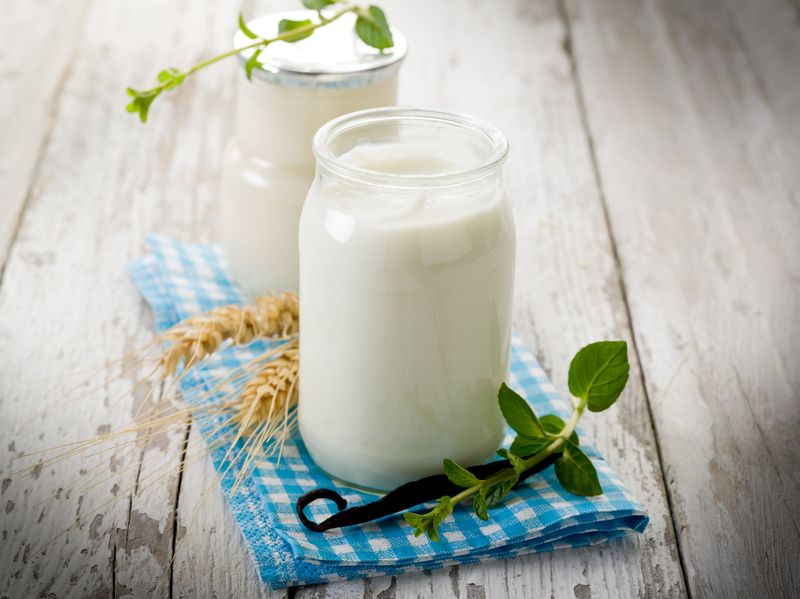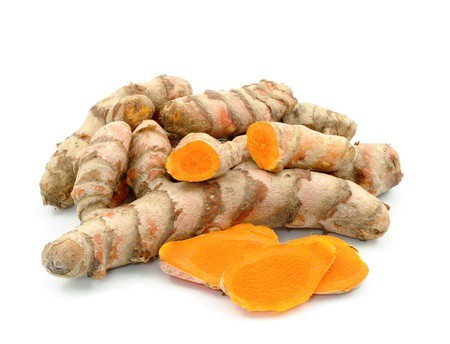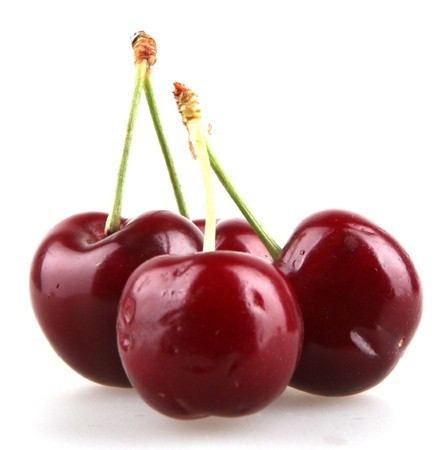Let’s start this article with the definition of arthritis. The word arthritis comes from “artho”, meaning joint and “itis” meaning inflammation. So it literally means inflammation of the joints.¹
Before sharing the top food myths of arthritis, it’s important to have some basic knowledge on the different types. Today we are focusing on the following three:
- Osteoarthritis: Osteoarthritis is the most common type of arthritis and is also commonly known as “wear-and-tear” arthritis. The Osteoarthritis Research Society International (OARSI) describes osteoarthritis as the result of the body’s inability to repair damaged joint tissues. It can develop due to abnormal stresses or injury; or as part of the aging process. This condition leads to the breakdown of cartilage and the underlying bone.
- Rheumatoid arthritis: Rheumatoid arthritis is an autoimmune inflammatory disease that can affect multiple joints in the body. Although its cause is still unknown, it is believed to be the result of a malfunctioning immune system. The latter attacks the joints creating inflammation that causes the tissue that lines the inside of joints to thicken and swell.
- Gout: Gout is an inflammatory type of arthritis caused by high uric acid in the blood, in turn, this causes uric acid crystals to form in joints. These cause painful attacks and when recurring, can cause permanent joint damage.¹
Everyone is different. What works for some, may not work for others and more importantly; what doesn’t work for most, may work for some.
If you’ve found success in reducing your arthritis symptoms using one of the following methods, please do not stop doing what you are doing! I am simply looking into common remedies that haven’t been clinically supported to help with arthritis pain.
So now without any further ado, here are some of the Arthritis Foundation’s main foods myths: ²
6 Common Arthritis Diet Myths, Busted!
1. Myth: Dairy Products Worsen Arthritis
What the research says: In a study published in 1983 in Arthritis & Rheumatism, people with rheumatoid arthritis on a dairy-free diet didn’t see better results than those consuming dairy. Even a more recent study from 2014 published in Arthritis Care & Research, women who drank more milk had less osteoarthritis advancement, and another research published in Annals of Rheumatic Diseases found that milk may help prevent gout.
Final verdict: There is not enough science to suggest discontinuing dairy consumption for arthritis relief. Milk and other dairy products are safe for most people with arthritis and provide calcium and protein. Yogurt and kefir also provide probiotics which are wonderful for digestive health. Also low-fat dairy products may increase excretion of uric acid in the urine. In a study, people who consumed a serving or more of low-fat milk or yogurt a day had less uric acid in their blood than those who abstained. High protein and low purine content of milk may explain dairy’s protective effect against gout attacks.²

2. Myth: Consuming Gin-soaked Golden Raisins Relieves Pain
What the research says: Golden raisins are often treated with sulfur dioxide gas to prevent the browning process. Sulfides left on the grapes after drying are thought to have anti-inflammatory benefits and sulfur has been explored for its role in joint health. A study done in mice from 25 years ago reported that a sulfur-containing compound helped their joints. The results from the study were inconclusive and haven’t been replicated in humans. Gin is made from juniper berries, which were used historically for their supposed anti-inflammatory properties. Although juniper berries (like most berries) do have anti-inflammatory properties³, the amount in gin hasn’t been studied to have any benefits.
Final verdict: No scientific study has shown this remedy reduces arthritis pain or inflammation. Note: Golden raisins have a good antioxidant capacity and phenolic content and could be consumed as part of a healthy diet!⁴ However there are way more powerful antioxidants that don’t have the sugar load (curcumin and astaxanthin).
3. Myth: Drinking Cider Vinegar Helps Reduce Pain
What the research says: It’s believed that beta-carotene in apple cider vinegar destroys free radicals (damaging cells). But there is so little! Some people say that vinegar dissolves acid crystals that cause joints to become stiff. Gout is the only form of arthritis that involves crystals (uric acid crystals), and apple cider vinegar doesn’t relieve gout pain.
Final verdict: Apple cider has many health benefits but there’s no evidence that it will relieve arthritis pain. It is good for regulating blood sugar and increasing digestion. Always use organic, raw, unfiltered, unpasteurized apple cider vinegar and dilute 1 to 2 tablespoons in a big glass of water, and sip it along with your meals one or two times a day. You can click here to view foods that are shown to be beneficial for gout.
4. Myth: Eating Nightshade Vegetables Makes Arthritis Worse
What the research says: Nightshade Veggies include tomatoes, eggplants, peppers, potatoes and the spice paprika. They are just some of the vegetables that contain small amounts of solanine, which some believe cause arthritis pain. Although high amounts of solanine isn’t good for your health, no formal research has ever confirmed the link with arthritis. More importantly the vegetables contain essential nutrients and healthy fiber. They usually are high in Vitamin C which is a wonderful antioxidant!
Final verdict: Everyone, including those with arthritis may benefit from the vitamins, minerals and fiber in nightshades. If you have a sensitivity to nightshade veggies then you should avoid them but there’s no need to eliminate them if you don’t. Note: A green or bitter potato indicates a high solanine content and shouldn’t be consumed.
5. Myth: To Lessen Symptoms, Eat a Raw Food Diet
What the research says: A study conducted by Finnish scientists in the British Journal of Rheumatology examined two groups with rheumatoid arthritis. One group was put on a raw vegan diet supplemented with probiotic beverages containing gut healthy bacteria. The second group were not put on a raw diet. The first group did report more symptom relief while on the diet, but researchers found no objective differences in disease activity, duration of morning stiffness or pain. This suggest reporting bias since the participants knew they were on the diet. Also half of those doing the raw diet quit prematurely because of nausea and diarrhea.
Final verdict: Fruits and veggies are very good for you and eating more fresh food is definitely beneficial for your overall health but there isn’t any studies behind a raw diet decreasing arthritis pain. Note: Increase your intake of raw veggies slowly to prevent the extra fiber from upsetting your stomach.
6. Myth: Drinking Red Wine Reduces Arthritis Pain
What the research says: Red wine contains a compound called resveratrol which studies have found to have anti-inflammatory properties. One recent study published in 2014 in Nucleic Acids Research found resveratrol stops the formation of inflammatory biomarkers involved with cancer, cardiovascular and chronic inflammatory diseases. Red wine, when consumed in moderation, may have some health benefits. However the amount of resveratrol in the recommended 1 small glass a day (5 oz or 150 ml) is very small. And multiple studies show that excessive drinking increases the production of pro-inflammatory cytokines. Furthermore excess alcohol consumption, including wine has been known to increase gout attacks.
Final verdict: Drink wine in moderation or not at all. And double check with your doctor before taking a sip, to make sure there isn’t an interaction with one of your medications.
Again, if you’ve tried these “remedies” and they have worked for you, that’s wonderful! But stay tuned for next week’s blog where I will share with you foods that have been clinically supported to reduce arthritis pain and symptoms.
Now that we’ve debunked some of the commonly believed myths, here are 6 foods that will actually help!
6 Foods to Eat for Arthritis Pain Relief
In this section of the post, I am sharing with you foods that have been clinically supported to relieve arthritis symptoms. So you should try including them in your diet.
When it comes to healing with food (and really anything in life) everyone is different. What works for most may not work for all. And as with all diets and natural health products, results usually take time. But these are definitely worth including in your everyday lives!
1. Add a Little Cinnamon to Your life
Cinnamon is a spice obtained from the inner bark of select trees from the genus Cinnamomum that is used in dishes around the world.
Cinnamon contains a lot of manganese, iron, fiber, and calcium. However you usually don’t consume it in such high amounts.
What’s cool about cinnamon is that it also contains derivatives like cinnamaldehyde, cinnamic acid, cinnamate and polyphenols.
These compounds are being studied for their antioxidant, anti-inflammatory, antidiabetic, antimicrobial and anticancer effects! And recently many trials have explored those benefits.
These include helping with diabetes, arteriosclerosis AND arthritis!⁵ Some studies have used between 1 gram and 6 grams of cinnamon to see health benefits. So sprinkle a little cinnamon in your oatmeal or even your hot chocolate!
Just keep in mind that extremely high doses may have a negative toxic effect due to a chemical called coumarin. (But who could eat 15 tablespoons of cinnamon anyway?)
2. Spice Things Up with Turmeric
 Turmeric is a plant closely related to ginger that is cultivated for its roots. Turmeric roots are dried and ground into a deep-orange-yellow powder often used as a spice in Indian and Asian cuisines.
Turmeric is a plant closely related to ginger that is cultivated for its roots. Turmeric roots are dried and ground into a deep-orange-yellow powder often used as a spice in Indian and Asian cuisines.
Turmeric contains special compounds called curcuminoids, which include curcumin among many others. In over 5 clinical trials curcumin was as effective in relieving arthritis symptoms compared to pain medicines.⁶
Cooking with turmeric is a wonderful way of getting some of the benefits of curcumin. But it’s hard to consume a lot of turmeric everyday and different species contain varying amounts of curcuminoids. So I would recommend taking a standardized formula that would ensure you are getting the most benefits.
Look for turmeric extract with curcuminoids standardized to 95%. Also, curcumin is best absorbed by the body with fat so taking it with coconut or olive oil would increase absorption.
Turmeric curcumin can also be found in our flagship anti-inflammatory fish oil: Triple Power Omega 3 Fish Oil
3. Check Out Cherries
 A few studies suggest that cherries may reduce the frequency of gout attacks. One small study found that patients who took a tablespoon of cherry juice concentrate twice a day for 4 months had a 50% reduction in gout attacks.
A few studies suggest that cherries may reduce the frequency of gout attacks. One small study found that patients who took a tablespoon of cherry juice concentrate twice a day for 4 months had a 50% reduction in gout attacks.
In a 2012 study, people who ate cherries or cherry extracts had fewer gout attacks in the next two days compared to when they didn’t take anything.⁷
This may be because cherries can help to reduce uric acid levels. Also the anthocyanins found in cherries have an anti-inflammatory effect!
Anthocyanins are also found in other red/purple fruits like strawberries, raspberries, blackberries and blueberries.
4. Bite Into Beans
Did you ever hear the song “Beans beans, the magical fruit…”?
Well whoever wrote that one had a good point! Legumes like lentils and beans are a great source of fiber and phytonutrients. These help lower C-reactive protein (CRP), an indicator of inflammation found in the blood.
In a 2012 study, scientists looked at the nutrient content of 10 common bean varieties. And they identified so many antioxidant and anti-inflammatory compounds(4). They are also high in vitamins and minerals, and they are an inexpensive source of protein! And this may be obvious but protein is so important for your bones, cartilage and muscles!
Oh, and did you know that small red beans, red kidney beans and pinto beans rank among the top four antioxidant-containing foods? This is according to the U.S. Department of Agriculture. By the way the other food in the top four is blueberries. So have a cup of beans twice a week (or more)!
5. Don’t Ditch the Dairy
Low-fat dairy products (milk, yogurt) are high in calcium and vitamin D. The latter is essential for you to absorb calcium and also boosts your immune system. Calcium with vitamin D were both found to support bone strength which is great for osteoporosis and osteoarthritis.
It can also help reduce gout attacks. Researchers have found that low-fat dairy products may increase excretion of uric acid in the urine. In an earlier study, people who consumed a serving or more of low-fat milk or yogurt a day had less uric acid in their blood than those who avoided dairy.
This protective effect can be explained by the high protein and low purine content of milk. If dairy doesn’t agree with you, you can get your calcium and vitamin D from dark leafy green vegetables (and AlgaeCal Plus!).
[ac_banner name=”aprarealgae”]
6. Fuel Up with Fish
Fish is an amazing source of protein and nutrients. Certain types of fish are packed with inflammation-fighting omega-3 fatty acids (EPA and DHA).
The American Heart Association and the Academy of Nutrition and Dietetics recommend three to four ounces of fish, twice a week. And arthritis experts suggest we should be eating much more!!
An article published in the Journal of Nutrition in 2004 studied 727 postmenopausal women. They found that those who had the highest consumption of omega-3s had lower levels of two inflammatory proteins (CRP and interleukin-6).⁸
So what types of fish should you consume to get these powerful omega 3s?
Omega-3-rich fish include salmon, tuna, mackerel and herring! But it can be hard to get the recommended EPA and DHA levels every day so taking a good quality fish oil supplement is definitely beneficial!
Recent studies have shown that taking 600 to 1,000 mg of omega 3s daily eases joint stiffness, tenderness, pain and swelling.⁴ And if you are looking for a wonderful supplement to help relieve your arthritis symptoms, check out Triple Power Fish Oil!
We hope you’ve found this list helpful! Let us know what you think in the comments!
References:
- The Arthritis Society, Types of Arthritis (2016)
- Arthritis foundation (2016) Arthritis Food Myths: Get the truth about foods commonly touted to relieve arthritis pain and inflammation: http://www.arthritis.org/living-with-arthritis/arthritis-diet/anti-inflammatory/food-myths-arthritis.php
- Akkol E.K, Guvenç A., Yesilada E. (2009) A comparative study on the antinociceptive and anti-inflammatory activities of five Juniperus taxa. Ethnopharmacol 125(2): 330-6
- Parker T.L., Wang X.H., Pazmiño J., Engeseth N.J. (2007) Antioxidant capacity and phenolic content of grapes, sun-dried raisins, and golden raisins and their effect on ex vivo serum antioxidant capacity. Journal of Agriculture and Food Chemistry, 55(21):8472-7
- Hariri M, Ghiasvand R (2016). Cinnamon and Chronic Diseases. Adv Exp Med Biol;929:1-24.
- Daily JW, Yang M, Park S. (2016) Efficacy of Turmeric Extracts and Curcumin for Alleviating the Symptoms of Joint Arthritis: A Systematic Review and Meta-Analysis of Randomized Clinical Trials. J Med Food ;19(8):717-29.
- Arthritis Foundation, 5 Good Foods for Gout. http://www.arthritis.org/about-arthritis/types/gout/articles/low-purine-diet.php
- Arthritis Foundation, The Ultimate Arthritis Diet http://www.arthritis.org/living-with-arthritis/arthritis-diet/anti-inflammatory/the-arthritis-diet.php





Lowana
November 4, 2016 , 6:02 amA friend of mine said that her Mother (who lived into her 90’s) and her Grandmother, drank a cup of hot milk with a spoonful of vegemite dissolved in it, daily, and neither had any sign of arthritis. So, I’m starting on it now.